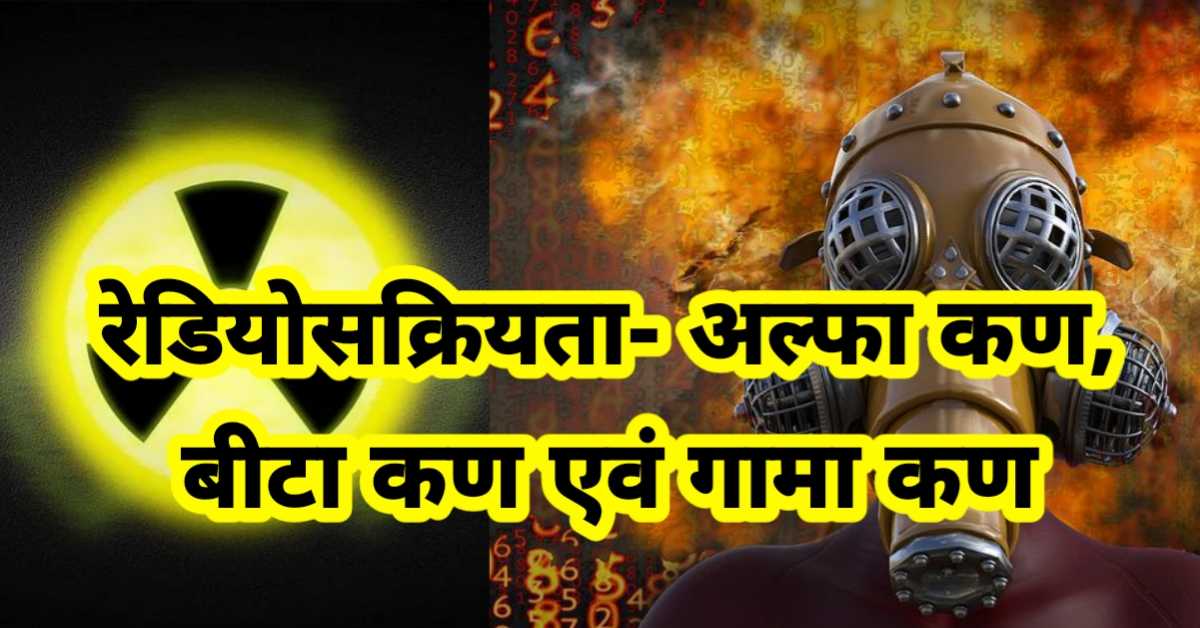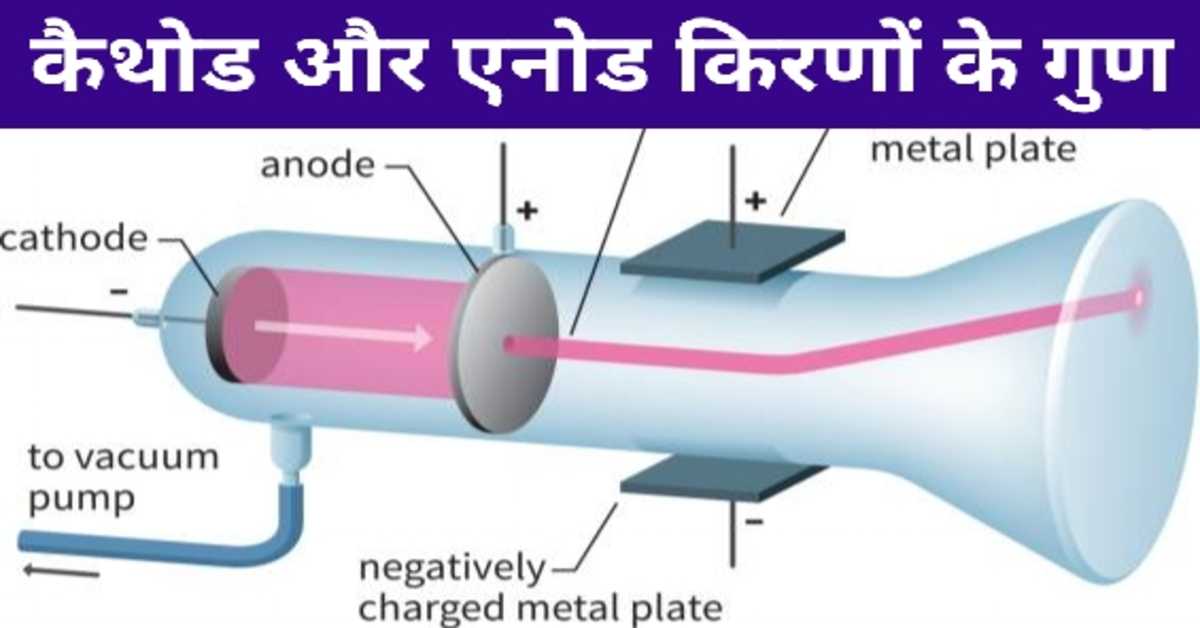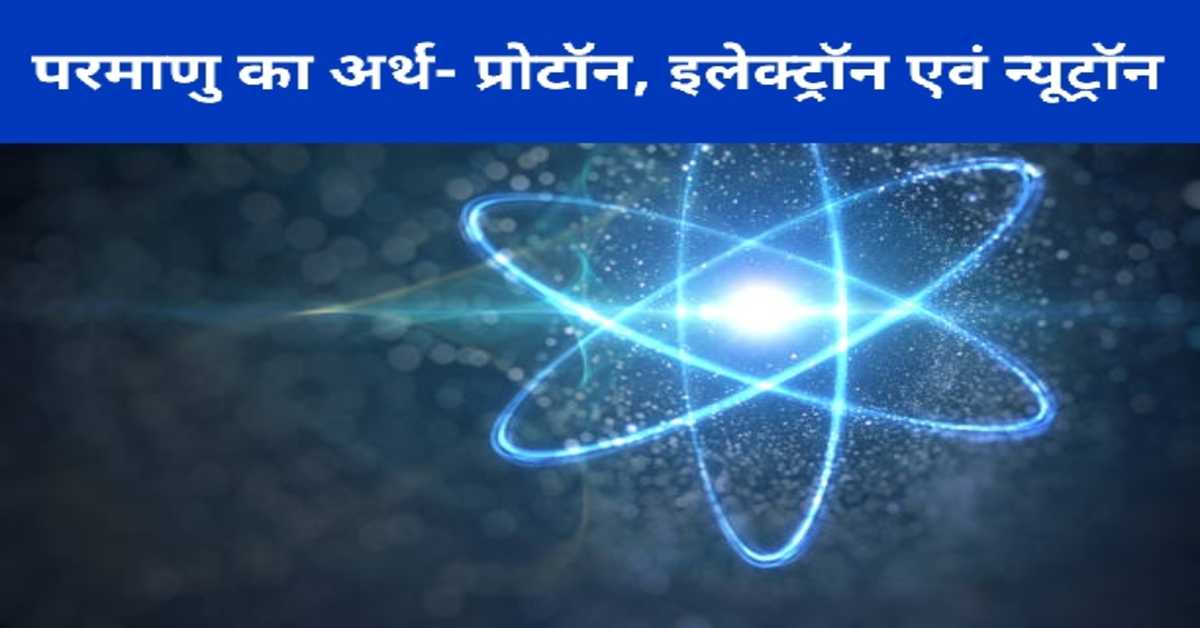
रेडियोसक्रियता क्या है? - अल्फा, बीटा एवं गामा कण | What is Radioactivity– alpha, beta and gamma particles
रेडियोसक्रियता- सर्वप्रथम फ्रांसीसी वैज्ञानिक हेनरी बेकुलर जब यूरेनियम के लवण पोटेशियम यूरेनियम सल्फेट पर कार्य कर रहे थे। तो उन्होंने पाया कि इस लवण से कुछ उच्च सक्रिय विकिरण उत्सर्जित होते हैं, जो फोटोग्राफिक प्लेट को प्रभावित करते हैं। इसके अतिरिक्त गैसों को आयनीकृत व कुछ ठोस पदार्थों को भी भेद देते हैं। अत: इन विकिरणों को 'रेडियोसक्रिय विकिरण' कहा गया तथा ऐसे पदार्थों को जिनसे इस प्रकार के विकिरण उत्सर्जित होते हैं, 'रेडियोसक्रिय पदार्थ' कहलाते हैं।
उदाहरण- रेडियम Ra, थोरियम Th, पोलोनियम Po आदि।
Radioactivity- The first French scientist Henri Becquerel was working on potassium uranium sulfate, a salt of uranium. So they found that some highly active radiation is emitted from this salt, which affects the photographic plate. Apart from this, gases are also ionized and some solids also penetrate. Therefore, these radiations are called 'radioactive radiation' and the substances from which such radiations are emitted are called 'radioactive substances'.
Example- Radium Ra, Thorium Th, Polonium Po etc.
रसायन विज्ञान के इन 👇 प्रकरणों को भी पढ़ें।
1. रसायन विज्ञान की प्रमुख शाखाएँ, विभिन्न क्षेत्रों में योगदान और शोध व अध्ययन के संस्थान
2. रसायनज्ञ- डॉ. प्रफुल चंद राय, डॉ. हरगोविंद सिंह खुराना, लेवोजिए
3. डाल्टन का परमाणु वाद एवं इसकी अवधारणाएँ
4. आधुनिक परमाणुवाद तथा अणु और परमाणु में अंतर
5. रासायनिक संयोग के नियम
रेडियोसक्रिय कण निम्न तीन प्रकार के होते हैं-
1. अल्फा कण
2. बीटा कण
3. गामा कण
There are three types of radioactive particles-
1. Alpha Particle
2. Beta Particle
3. Gamma Particle
अल्फा कण- वे किरणें जो विद्युत क्षेत्र में, ऋणात्मक प्लेट की ओर विक्षेपित होती हैं, अल्फा किरणें कहलाती हैं। इसमें दो इकाई धनावेश तथा चार इकाई द्रव्यमान होता है। इसका वेग बहुत अधिक होता है। यह प्रकाश के वेग से लगभग 1/10 गुना अधिक होता है। इसकी भेदन क्षमता अधिक होती है। ये फोटोग्राफिक प्लेट को प्रभावित करती है।
Alpha Particles- Those rays which are deflected towards negative plate in electric field are called alpha rays. It has two units of positive charge and four units of mass. Its velocity is very high. It is about 1/10 times the speed of light. It has high penetrating power. It affects the photographic plate.
बीटा कण- ये किरणें विद्युत क्षेत्र में धनात्मक प्लेट की ओर विक्षेपित हो जाती हैं। इन कणों में इकाई ऋणावेश तथा द्रव्यमान नगण्य होता है। इसका वेग प्रकाश के वेग के लगभग समान होता है। इसकी भेदन क्षमता अल्फा कणों से 100 गुना अधिक होती है। ये फोटोग्राफिक प्लेट को सर्वाधिक प्रभावित करती है।
Beta particles- These rays are deflected towards the positive plate in the electric field. These particles have unit negative charge and negligible mass. Its velocity is almost equal to the speed of light. Its penetrating power is 100 times greater than alpha particles. It affects the photographic plate the most.
रसायन विज्ञान के इन 👇 प्रकरणों को भी पढ़ें।
1. परमाणु द्रव्यमान, अणु (आण्विक) द्रव्यमान, सूत्र द्रव्यमान, मोल संकल्पना (संख्या)
2. सूत्र- संरचना सूत्र, अणु सूत्र और मूलानुपाती सूत्र
3. रासायनिक समीकरण- लिखने की विधियाँ, संतुलित करने की विधियाँ
4. रासायनिक अभिक्रिया में सीमांत अभिकर्मक क्या होते हैं?
5. विलियन के सांद्रण को व्यक्त करने की विधियाँ
गामा कण- वे किरणें जो विद्युत क्षेत्र में विक्षेपित नहीं होती, गामा किरणें कहलाती हैं। इन्हें विद्युत चुम्बकीय विकिरण भी कहते हैं। इस पर कोई आवेश एवं द्रव्यमान नहीं होता है। इसका वेग प्रकाश के वेग के लगभग समान होता है। इसकी भेदन क्षमता बीटा कणों की तुलना में 100 गुना तथा अल्फा कणों की तुलना में लगभग 10,000 गुना होती है। ये फोटोग्राफिक प्लेट को बहुत अधिक प्रभावित करती हैं।
Gamma Particle- Those rays which are not deflected in electric field are called gamma rays. These are also called electromagnetic radiation. There is no charge and mass on it. Its velocity is almost equal to the speed of light. Its penetrating power is 100 times that of beta particles and about 10,000 times that of alpha particles. These greatly affect the photographic plate.
टीप- परमाणु का समस्त भार नाभिक में होता है।
Tip- All the mass of an atom is in the nucleus.
रसायन विज्ञान के इन 👇 प्रकरणों को भी पढ़ें।
1. सार्थक अंक और इसे लिखने के नियम
2. परमाणु का अर्थ- प्रोटॉन, इलेक्ट्रॉन एवं न्यूट्रॉन
3. कैथोड और एनोड किरणों के गुण
आशा है, उपरोक्त जानकारी परीक्षार्थियों / विद्यार्थियों के लिए ज्ञानवर्धक एवं परीक्षापयोगी होगी।
धन्यवाद।
RF Temre
infosrf.com
संबंधित जानकारी नीचे देखें।
(Watch related information below) 👇🏻

आशा है, उपरोक्त जानकारी उपयोगी एवं महत्वपूर्ण होगी।
(I hope the above information will be useful and important. )
Thank you.
R. F. Tembhre
(Teacher)
infosrf.com




Comments